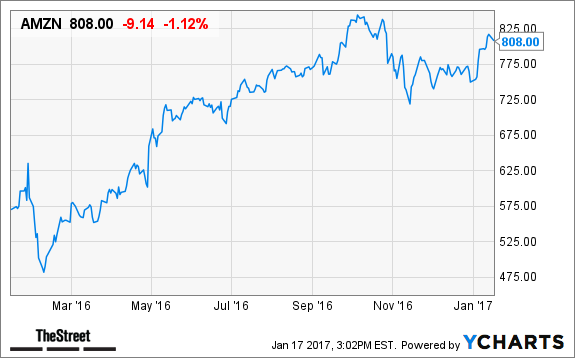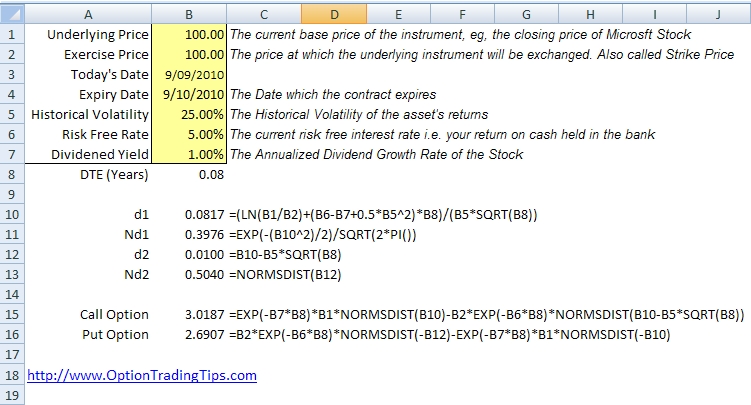How to Calculate the Break-Even Point? Analysis, Definition, Formula
Contents
Variable cost remains constant per unit of output irrespective of the level of output and thus fluctuates directly in proportion to changes in the volume of output. The analysis of break-even points is very important for start-ups. It helps them to decide the viability of a business idea, along with formulating pricing strategies and costs. In basic, your revenue margin determines how healthy your organization is – with low margins you’re dancing on skinny ice and any change for the more severe might lead to huge trouble.
For public utility companies, the marginal cost pricing approach is quite beneficial. It aids them in increasing productivity or maximising capacity utilisation. Only when the lowest possible price is charged is this achievable. The adoption of marginal cost pricing by public utility companies aids in the maximisation of societal welfare. Higher the P/V ratio, more will be the profit and lower the P/V ratio, lesser will be the profit. Let demand be ‘x’ the number of units at which total cost of production for manufacturing.
Additionally, break-even analysis is very useful for knowing the overall ability of a business to generate a profit. It helps to determine the change in profits if the price of a product is altered. It helps to determine remaining/unused capacity of the company once the breakeven is reached. This will help to show the maximum profit on a particular product/service that can be generated. At the time of starting a new business, break-even analysis is a must. It will tell you whether your business idea is viable and force you to research costs and your pricing strategy.
How to Calculate the Break-Even Point – Analysis, Definition, Formula & Examples
A break-even chart is based upon a number of assumptions, discussed above, which may not hold good under all circumstances. A breakeven analysis is used to determine how much sales volume your business needs to start making a profit, based on your fixed costs, variable costs, and selling price. Break-even analysis also deals with the contribution margin of a product. The excess between the selling price and total variable costs is known as contribution margin.
The contribution margin reveals how a lot of the company’s revenues shall be contributing towards masking the fixed costs. It can be expressed on per unit foundation or for the entire quantity. It’s one of the largest questions you have to reply if you’re beginning a business. The break-even point method is calculated by dividing the total fixed prices of production by the worth per unit less the variable costs to supply the product.

CAs, experts and businesses can get GST ready with Clear GST software & certification course. Our GST Software helps CAs, tax experts & business to manage returns & invoices in an easy manner. Our Goods & Services Tax course includes tutorial videos, guides and expert assistance to help you in mastering Goods and Services Tax.
Sales of goods can significantly decline in a situation of financial crisis or breakdown. In such scenarios, managing margin of safety becomes easier with concepts like break even analysis. That’s because the company will have an idea on the minimum number of products they need to sell to ensure their organization doesn’t undergo any loss. These overhead costs occur after the decision to start an economic activity is taken and these costs are directly related to the level of production, but not the quantity of production. Fixed costs include interest, taxes, salaries, rent, depreciation costs, labour costs, energy costs etc. Break-even is that point in the business cycle when a company’s sales value equals the expense incurred.
Break-Even Analysis FAQs:
At this point, total contribution is equal to the total fixed cost and hence there is no profit or loss. The break-even chart can also be drawn by another method which is a variation of the first method. Under this method, the variable cost line is drawn first and then fixed cost line is drawn over and parallel to le variable cost line. The fixed cost line, so drawn, represents the total cost (Variable + Fixed) at various levels of output because it is drawn above the variable cost line. The break-even sales can be calculated by multiplying the selling price per unit with the break-even point, i.e., the number of units to be produced. This break-even point can be calculated by the formula (Fixed cost / price per cost – variable cost).

It is the point of intersection of the total cost line and total revenue line. It is thepoint of intersection of the total cost line and advantage of break even analysis total revenue line. A large margin of safety indicates that the business can earn profit even if there is a great reduction in output.
In a breakeven chart, X axis is the volume of production and sakes and Y axis represents money value . The chart is prepared by drawing a line to show total revenue at all levels of sales, and a total cost line to show total cost at all levels of production and sales. The breakeven point is where the sales revenue line and total cost line intersect. The marginal costing approach is straightforward to comprehend and use. This is because fixed expenses are not included in the cost of production, and fixed costs are not apportioned arbitrarily. Variable costs (like direct materials cost, direct wages, etc.) and Fixed costs (like factory and office rent, managers’ salary, etc.).
Variable expenses include direct hourly worker payroll costs, sales commissions, and raw material, utility, and shipping costs, to name a few. The total of the labor and material expenses required to create one unit of your product is known as variable costs. Marginal costing is a useful tool for comparing the results of different goods or divisions.
Break Even Analysis | Understanding the basics to increase profitability
It will solely inform you how many models you need to sell to be able to break even. As you modify your price, the number of people keen to purchase your product will change as properly. When most people take into consideration pricing, they give thought to how a lot their product prices to create. New businesses have a lot to plan before they introduce a facility and start manufacturing goods for sale.
- The Break-even point usually means the business volume that balances total costs with total gains.
- To understand why we need to calculate this, look at its importance in detail.
- Break-even is a primary concept of cost accounting, and its use is not limited to a particular business segment.
- A business is said to break-even when its total sales are equal to its total costs.
It is essential that the results from break-even analysis are interpreted correctly and the data is effectively utilized to make better, knowledgeable business choices. For instance, if a break-even analysis of a business reveal that 1000 models must be produced to break-even. Lower variable prices equate to higher earnings per unit and scale back the total quantity that should be produced. Contribution margin may be calculated by subtracting variable bills from the revenues. The break-even analysis is used to examine the relation between the fixed cost, variable cost, and revenue generated by a company. Usually, a company with a low fixed cost will have a low break-even point of sale.
What is a Break-Even Analysis
If prospects won’t settle for price increases in order for you to cowl your variable prices, you’re probably better off not having the sales. Remember that after overlaying the variable costs, those promoting costs should then cover the fastened prices and bills. A complete unfavorable contribution margin means your loss might be larger than the amount of the fastened prices and bills. As per the break even analysis definition, its calculation can help companies determine the minimum number of goods to be sold so that the total fixed and variable cost of production is met. Therefore, a company already has an exact figure about the number of units to be sold to overcome losses. The breakeven point for a standard sales mix of product is calculated by dividing the total fixed costs by the weighted average contribution per unit, or the weighted average C/S ratio.
In contrast, the customer advantage of consuming an additional unit of a good or service is a marginal benefit. Furthermore, determining the unpredictability of semi-variable costs is quite challenging. The current connection between https://1investing.in/ cost, selling price, and volume is thoroughly discussed. Under and excess absorption of overheads is not a concern when using marginal costing. Marginal costing depicts the impact of changes in sales volume on profit more clearly.
In the performance review, only expenses directly connected to the goods or department are included. As a result, marginal costing is extremely beneficial in cost volume profit analysis (break-even analysis). The profit-volume graph may be preferred to a break-even chart because profits or losses can be directly read at different levels of activity. But the basic limitation of a P/V graph is that is does not show how costs vary with the change in the level of activity.
The large margin of safety indicates that the business is sound and even if there is a substantial fall in sales, there will still be some profit. Selling prices per unit remain constant at all levels of activity. The number of units to be produced at break-even point can be determined by drawing a perpendicular to the X-axis from the point of intersection of cost and sales line. Selling price per unit remains unchanged or constant at all levels of output.
This margin calculator will be your greatest pal if you wish to find out an merchandise’s income, assuming you realize its value and your required profit margin share. In the earlier instance, the break-even level was calculated in terms of number of units. This can be accomplished by dividing firm’s total mounted costs by contribution margin ratio. Break-even is a condition in which the company makes no profit nor suffers any loss, it just recovers all the money spent on the development of a product. A break-even analysis is a financial tool which helps a company to determine the stage at which the company, or a new service or a product, will be profitable.
If you’re introducing a new product that no one has ever seen before, you have no idea how big the market will be or when competitors will appear. But it does provide a starting point for your quest for the “best” pricing for your purchase. The distribution of fixed costs across a number of items is problematic, and it believes that business circumstances will remain constant, which is not the case. Assuming that the selling price remains constant results in a straight revenue line, which may or may not be accurate. The selling price of a product is determined by a variety of factors such as market demand and supply, competition, and so on, and it seldom remains constant. The information, product and services provided on this website are provided on an “as is” and “as available” basis without any warranty or representation, express or implied.
Khatabook Blogs are meant purely for educational discussion of financial products and services. Khatabook does not make a guarantee that the service will meet your requirements, or that it will be uninterrupted, timely and secure, and that errors, if any, will be corrected. The material and information contained herein is for general information purposes only. Consult a professional before relying on the information to make any legal, financial or business decisions.
The variable costs are shown directly for various levels of output/sales. The line indicates that fixed expenses remain constant at all levels of activity. On the X axis of the graph is plotted the number of units produced, sold and on the Y axis are shown costs and sales revenues.
